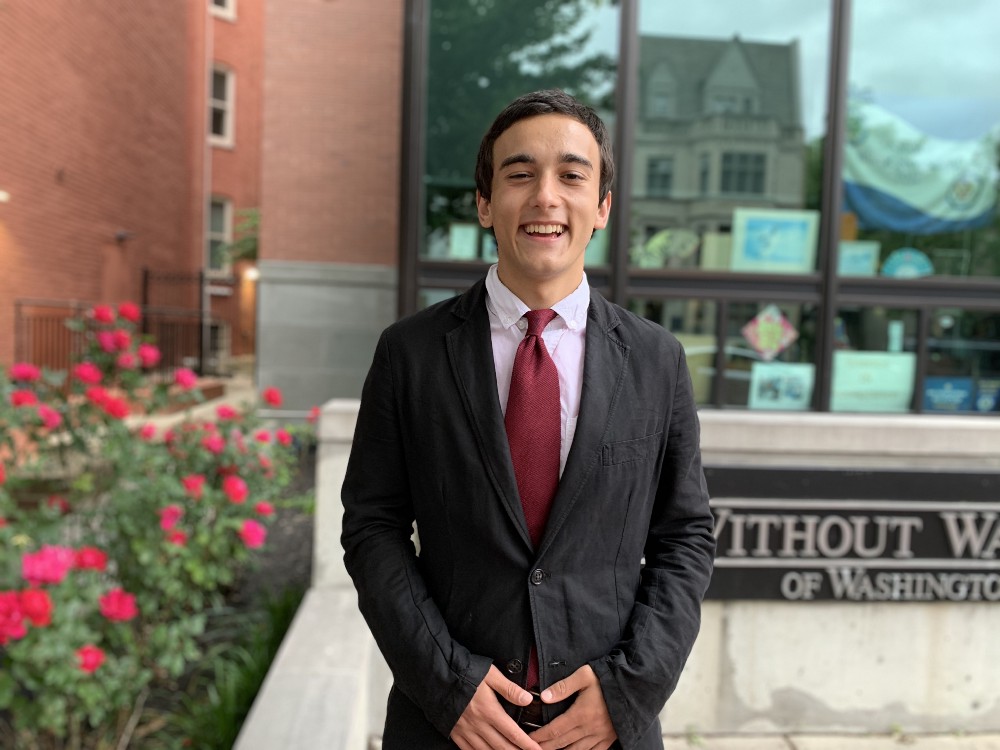As a senior at School Without Walls High School, everyone is required to take on a year-long project focusing on solving a real-world problem. While brainstorming the seemingly countless problems facing the world, car accidents was top of mind for me. Almost everyone has either experienced a car accident or knows someone who has been in one. My grandmother broke her arm in a crash and my mom had a classmate in high school who was killed by a drunk driver.
In fact, more than 30,000 people died in the U.S. from car crashes in 2017, according to the National Highway Traffic Safety Administration. But how can we change this? What is the solution to prevent crashes from happening when most are caused by human error? As I did more research on the topic, it became clear that autonomous vehicles were the front-runner. Don’t get me wrong, I was skeptical about the technology at first. But, this was something I wanted to dive deeper into as part of my senior project.
I reached out to the D.C. Office of the Deputy Mayor for Planning & Economic Development because I wanted to connect with someone in the self-driving vehicle sector — that’s how I met Brittany Pauley, Ford’s Washington D.C. autonomous vehicle market manager. She became my mentor and advisor throughout the year for my various projects, but also educated me on the world of self-driving vehicles and the work Ford is doing in my hometown of Washington D.C.
When I first told my class about my senior project idea, one of the biggest criticisms of autonomous vehicles I heard from classmates was: What if the technology fails? This was one of my biggest concerns, too.
So, what changed my mind? With the help of the Ford Autonomous Vehicles LLC team, I educated myself on the technology, learned how it is being built to operate better than a human driver and came to understand that experts are thinking about various scenarios that could happen if you are in a vehicle without a safety operator — which makes me trust this technology even more. Ultimately, knowing Ford is also collaborating closely with the District or City of Washington D.C. on how this technology will be rolled out meant something to me. In fact, the collaboration with the local government helped build my confidence.
Through all of my research I decided to draft a federal bill for my project (and sent it to a few think tanks) titled the “Advancement of Autonomous Vehicle Education, Safety and Technology Act.” In the past, lawmakers have passed bills to mandate seatbelts and airbags — technologies that have been proven to make cars safer. I thought to myself, “Autonomous technology is another safety mechanism, so why can’t we pass legislation on it too?” While I know there is work being done at both the federal and local level, I wanted to shed light on some ideas I think are important, including creating a new sub-agency in the Department of Transportation that solely works on autonomous vehicles. My goal is to have my ideas considered and incorporated into potential bills that are likely being worked on already.
In order to make self-driving vehicles a success, we have to educate people on what they are capable of and how well they are being designed. I had the opportunity to argue in favor of this technology to my fellow classmates and therefore believe continuous education is key to earning consumer trust — this could include town halls in the community and even classes where students can learn about how technology is becoming intertwined with their lives. Most importantly, communities need to be reassured that jobs will be created, not taken away.
I knew this technology was complex and challenging but over the last eight months, my biggest takeaway was how close we are to self-driving vehicles becoming a reality. In the near future, autonomous vehicles will be among the leading discussions within governments and communities across the country.
On top of self-driving vehicles’ potential to help save lives, I am also excited to see their ability to reduce traffic. This is especially exciting as someone living in D.C. Anyone who lives here knows how painfully slow D.C. traffic is during rush hour. With the goal of self-driving vehicles to reduce single-vehicle riders, and increase coordination among them autonomously, the issues D.C. faces with congestion and emissions could be curbed significantly. I think everyone, but especially those who live in cities like D.C. with a lot of traffic, should be excited to see the impact of autonomous vehicles on traffic — and I believe it will positively impact hundreds of millions of Americans.
I plan to study mathematics in college and it’s exciting to know how integral math is in the development of self-driving technology. As I look ahead, I am excited to explore how I can use math to tackle some of the challenges facing autonomous vehicles and maybe even pursue a job in the field.
I enjoyed studying self-driving vehicles over the last year and learning more about how they are being built to help make our lives easier.







